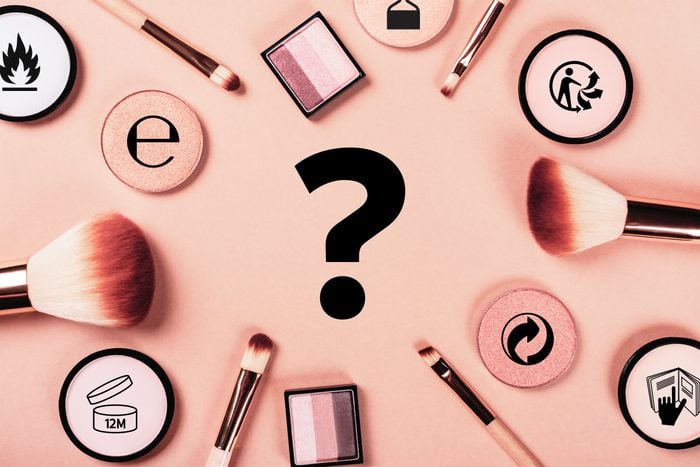
What do makeup symbols mean?
When shopping for makeup and skin-care products, you’re probably reading the claims and ingredients on the packaging. Do you have oily skin? You’ll likely want a matte formula without any extra oil. Looking to minimize fine lines? You’ll easily spot an anti-aging cream with words like retinol or plumping peptides. But do you pay as much attention to the makeup symbols on the back of the bottle or jar? You should! Just like the colored circles on food packages and laundry symbols on clothing labels, these little illustrations give you a ton of useful information.
One of the most important symbols highlights a product’s PAO (period after opening). That’s because using a product past its expiration date may make it less effective and even unsafe to use. “Bacterial growth, decomposition of products and decrease in efficacy are all reasons to pay attention to the expiration date of products,” explains Anisha Khanna, co-founder and CEO of Sonäge Skincare.
The bottom line: Whether you’re looking for clean-beauty brands or buying an inexpensive option at the drugstore, these symbols carry a lot of weight—for foundation, lipstick, mascara, moisturizer and more. Here’s a handy guide to deciphering the most common beauty symbols, as well as some makeup tips to help you make the most of your products.
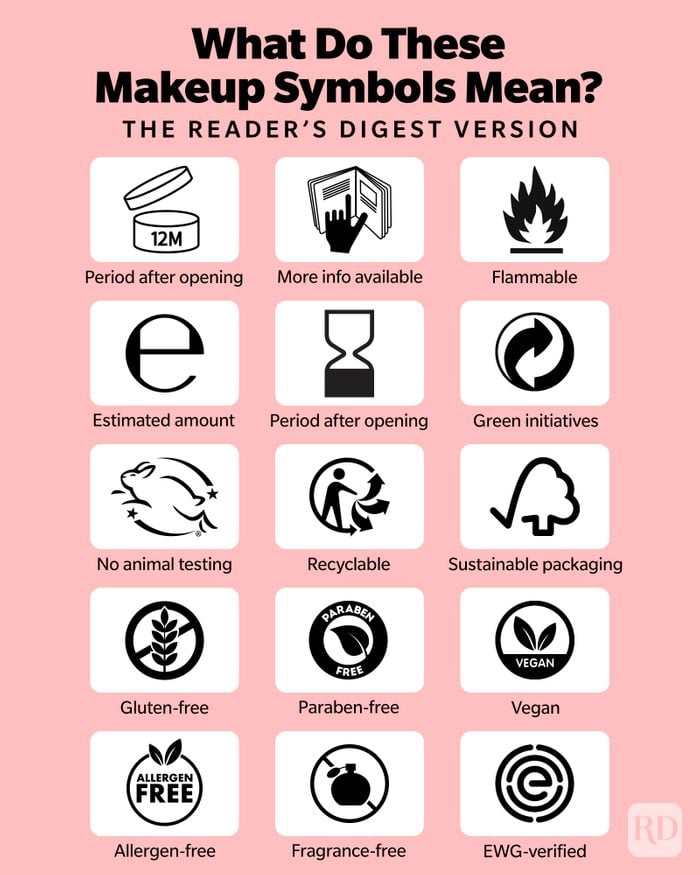
Get Reader’s Digest’s Read Up newsletter for more beauty, humor, cleaning, travel, tech and fun facts all week long.
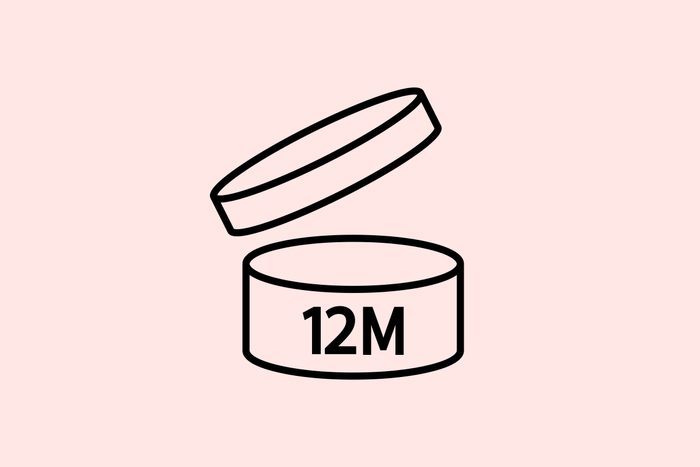
Open jar
Sadly, your expensive lotions, potions and shampoos have expiration dates—and that’s where this little jar symbol comes in. It indicates the Period After Opening, or PAO. The M stands for months, and the number notes—you guessed it—how many months the product will last after opening. So a “12M” product will last for a year after you open it, but you can hold on to a “24M” bottle for two years. Be sure to note when you opened the product, since that’s when the countdown starts. (Generally, products will last an additional one to three years before opening, depending on the formula.)
Is it really that big a deal if you use a product for longer than the recommended time period? It could be. “We continuously contaminate the product every time we open and touch it,” says Homer Swei, PhD, senior vice president of healthy living science at the Environmental Working Group (EWG). This could result in an infection or skin irritation. At the very least, you could be putting germs on your face every morning and not realize it. A product in a pump format may last longer, since you won’t be touching the content.
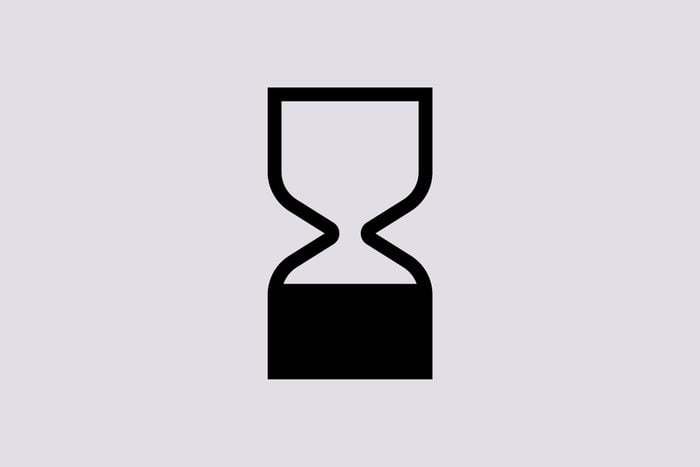
Hourglass
Similar to the open jar, the hourglass symbol, which often has a number in it, indicates the period after opening. As noted earlier, if you hold onto products for too long, they can “spoil.” That’s true of something like mascara, which could irritate eyes, as well as skin-care products, whose ingredients separate and break down over time, causing them to lose their efficacy. Expired sunscreen, for example, won’t protect you for as long and could lead to a painful burn. If you’re looking at a bottle you bought more than two and a half years ago and this symbol is on it, chuck it.
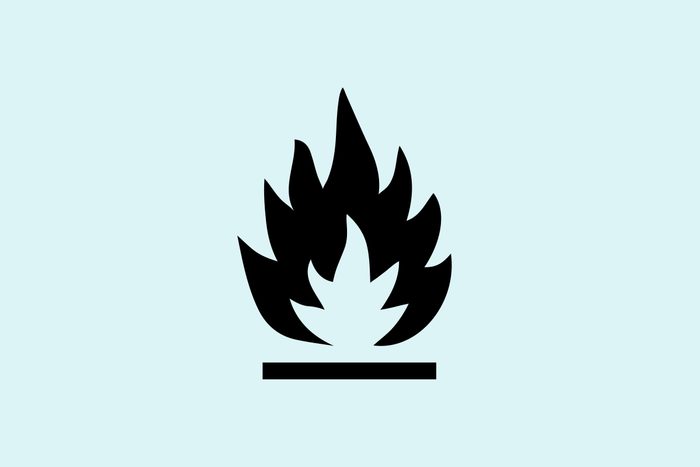
Flame
These makeup symbols are pretty self-explanatory, and they should serve as a warning. “The flame logo means that a product is flammable—easily combustible or volatile,” explains Khanna. This is typical in products with alcohol, like nail polish remover, or in aerosol sprays like hairspray. When using them, she adds, “avoid flames like candles, heat sources like hairstyling tools, or any other flame/heat source.” In other words, blow out the candles you put around your bath before going ham with the hairspray.
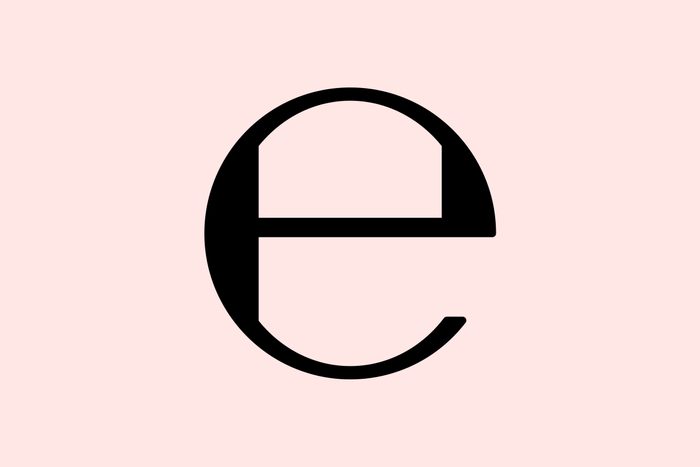
Lowercase “e”
You’ll find this symbol on beauty products produced in Europe, but it doesn’t indicate any kind of fancy French beauty ingredient. It’s actually an “estimated sign,” which refers to the volume of the product. So if your jar says it has 150 milliliters, you can guarantee you’re getting just that—or at least close enough that you’re not getting ripped off. (It is “estimated,” after all.) “The purpose of this symbol is to confirm that consumers receive the amount of product that they are paying for and to establish measurement standards across the industry,” says Khanna, noting that it holds manufacturers accountable.
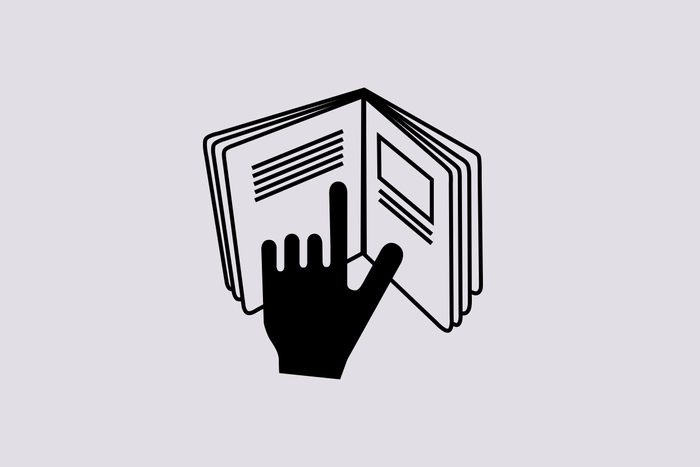
Book and hand
A beauty bottle is only so big. If you see this makeup symbol on a bottle, you won’t get all the product info from the package alone—the product has a separate leaflet (likely inside the box) with more details, says Khanna. The included insert may have vital information such as a complete ingredients list, directions on how to use the product and warnings or other necessary information. For example, the insert may note that using a product can make you more susceptible to sunburns, something that’s common with products that contain retinol or exfoliating ingredients.
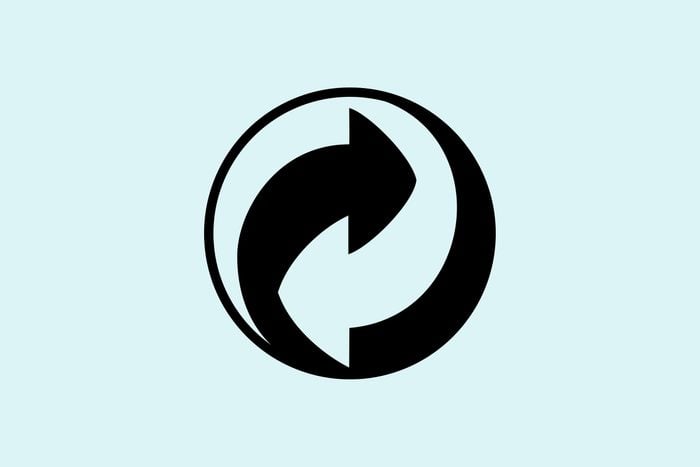
Interlocking arrows
If these makeup symbols make you think of the triangle of arrows that tells you a package is recyclable, you have good instincts. The Green Dot symbol (which can actually be either green or black-and-white) means the company puts money toward recycling or packaging-recovery programs. Some beauty products are in packaging that isn’t particularly eco-friendly (even ones made of materials that can generally be recycled, like plastic), but companies that put this symbol on their products are balancing that out by supporting green movements.
“This is important for conscious consumerism and knowing the sustainability efforts of a brand,” explains Khanna. Just be aware that this doesn’t signify that the packaging itself is completely recyclable—just that the manufacturer is trying to mitigate the environmental impact of their packaging.
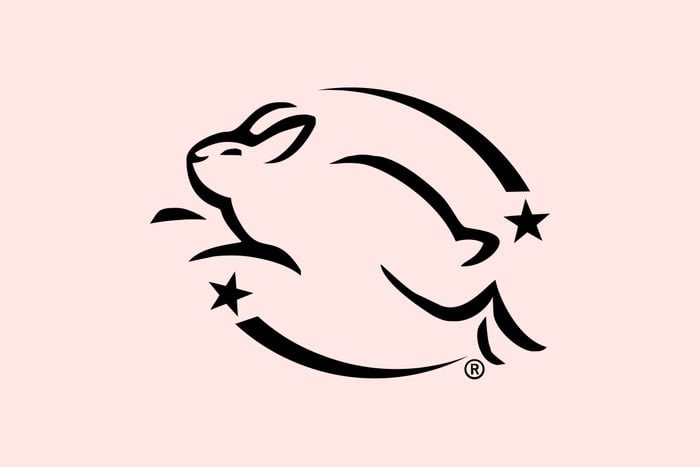
Jumping bunny
Seeing a happy rabbit will make you smile, but the meaning behind it is even better. “Animal-friendly, cruelty-free products are identified by a bunny makeup symbol,” explains Khanna. “The bunny logo allows consumers to easily recognize which products are free from animal testing. The two most popular cruelty-free certification programs are PETA and Leaping Bunny (by the Coalition for Consumer Information on Cosmetics, or CCIC). Brands must meet a list of cruelty-free standards, sign legal documents and submit documentation to ensure compliance.”
However, not every cruelty-free product is guaranteed to be vegan. It just means that there was no animal testing. It’s also important to confirm the logo is legitimately Leaping Bunny or PETA certified, since many unofficial bunny logos are used on products to give a false impression. Leaping Bunny’s logo is a black outline of a bunny with two blue shooting stars, and PETA’s new logo features a bunny with pink ears.
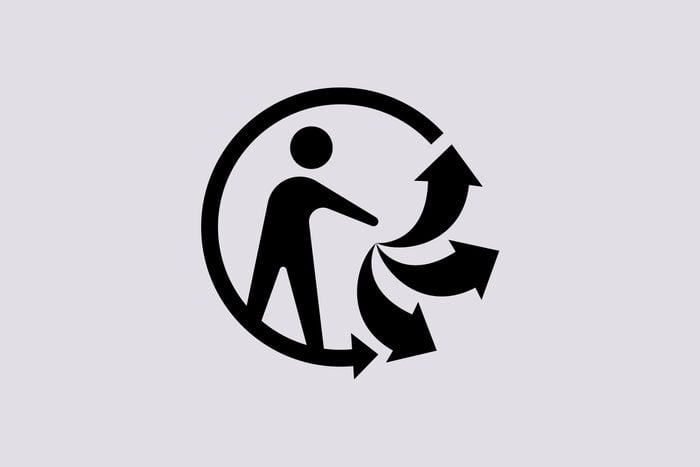
Person with three arrows
If you’re a fan of French beauty, you’ve probably seen this little guy hanging out on the back of your jars of skin-tightening creams and more. This is a French makeup symbol that reminds you to dispose of your packaging responsibly. “The person-with-arrows logo is one that is used in several countries to indicate that a product is recyclable,” says Khanna. “The closed loop of arrows indicates the circularity of recycling, and the little person represents the consumer.” This is similar to the three-arrow recycling triangle most Americans are familiar with.
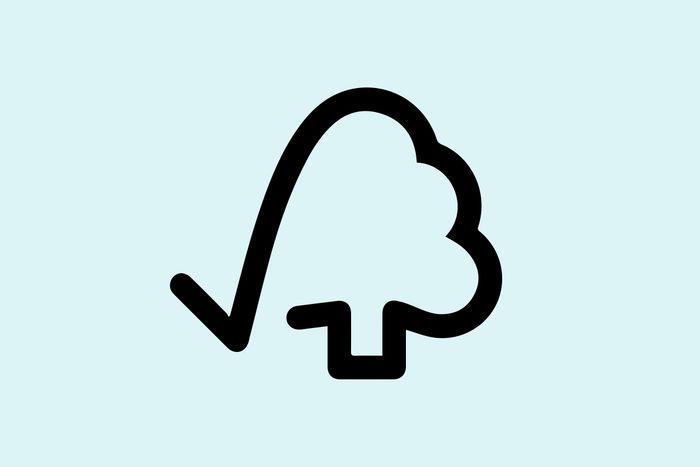
Check that grows into a tree
The Forest Stewardship Council (FSC) has a green symbol that looks like a check mark that morphs into a tree. “This generally refers to sustainable forestry,” says Swei. “FSC is the best, but others might also appear.” It means that the company has set standards for responsible forest management, helping protect trees and forests for future generations by producing the packaging in a sustainable way.
You’ll likely see this on paper packaging or the box a jar may be sold inside. It also pops up on non-beauty products like guitars, books, picture frames and more. Helpful hint: Even if you don’t see this symbol on your products, there is really a way to recycle almost anything.
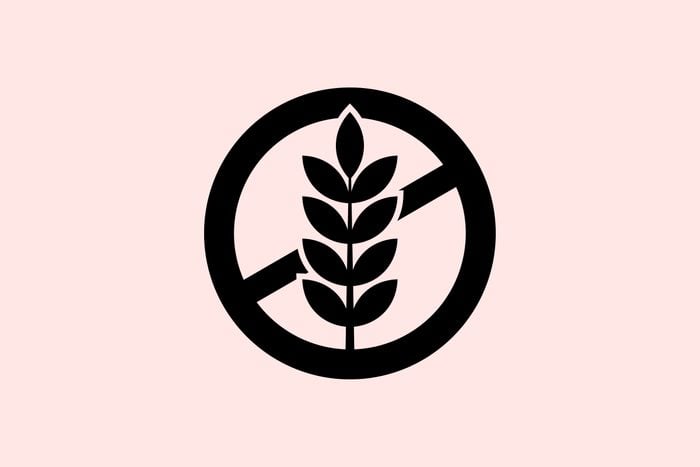
Wheat with a line through it
This symbol may appear in a couple of different ways. One popular version is a wheat stem with a line crossed through it. Another one, which is also commonly seen on food packaging, has the letters GF in a circle, surrounded by “certified gluten-free.” Multiple companies can certify something as gluten-free, including the Gluten-Free Certification Organization (GFCO) and the FDA. This symbol is most relevant to people who have celiac disease or are intolerable to gluten.
That said, even if you are allergic to gluten, it’s unlikely you’ll have a reaction just from using a cosmetic that contains gluten. (It will barely, if at all, pass through your skin barrier.) But there is one makeup category where this is particularly relevant: anything that goes on your lips—think lipstick, lip glosses and lip scrubs—since lipstick is often accidentally ingested. This also applies to toothpaste.
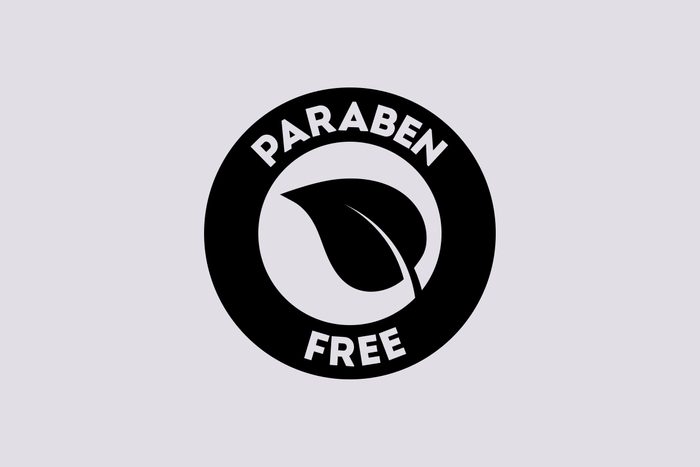
Leaf with the phrase paraben free in a circle
Parabens have been used for decades to stabilize products, helping to prevent the growth of bacteria and mold. However, there has recently been a strong backlash to parabens in products, after scientific studies linked them to an increased risk of cancer, as well as hormone disruption, which may lead to fertility issues.
“Recent studies suggest that parabens may cause various health issues,” says Khanna. “For consumers who wish to use paraben-free products, this logo is indicative of that.” Common on both clean-beauty brands and standard beauty products, this symbol is typically represented as a leaf with the words paraben free surrounding the circle of the logo.
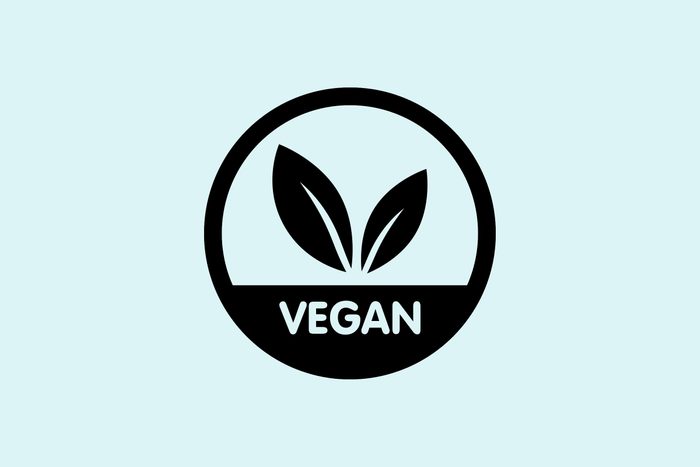
Leaf with a V or the word vegan
This is not a standard makeup symbol and can appear as a leaf with the word vegan surrounding the circular image, or as a bold black-and-white V in a circle. Typically added by a brand, this logo isn’t certified by a third party, so the claims may vary. “Typically, this logo indicates that the product is free from animal-derived ingredients such as dairy, eggs, honey or meat,” explains Khanna. “It also does not contain any byproducts such as gelatin or whey. It’s important to note that just because a product is free from animal-derived products, it doesn’t mean that it’s vegan. Always read the ingredients list to double-check.”
In addition to being on makeup and skin-care products, you might see it on makeup brushes, since bristles are sometimes made with animal fur. The vegan symbol does not appear on products like those from Burt’s Bees, which is transparent about using bee-derived ingredients in their products. Burt’s Bees is, however, Leaping Bunny Certified, and has been a cruelty-free brand for more than 10 years.
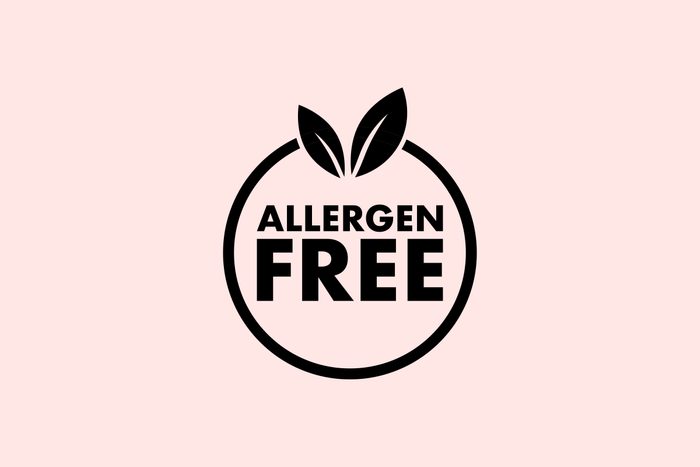
Allergen-friendly
This makeup symbol should be interpreted with caution, as anyone can be allergic to anything. Typically, it means the product is safe for sensitive skin, but even “clean” ingredients can irritate the skin barrier or cause an allergic reaction. You should also be aware that this is not a regulated symbol. “It is important for consumers who have allergies to read the facts on products to ensure the risk of cross-contamination is low,” says Khanna. “Certain products are produced in facilities that are exposed to allergens even though they might not contain the allergens in the formulation.”
If you are very allergic to a certain ingredient, you may need to do some digging in the booklet insert or on the web to see how and where a product is made. For example, if you have eczema, you should avoid ingredients like fragrances, ethanol and lanolin, among others, because they may cause a rash or inflammation (also called atopic dermatitis).
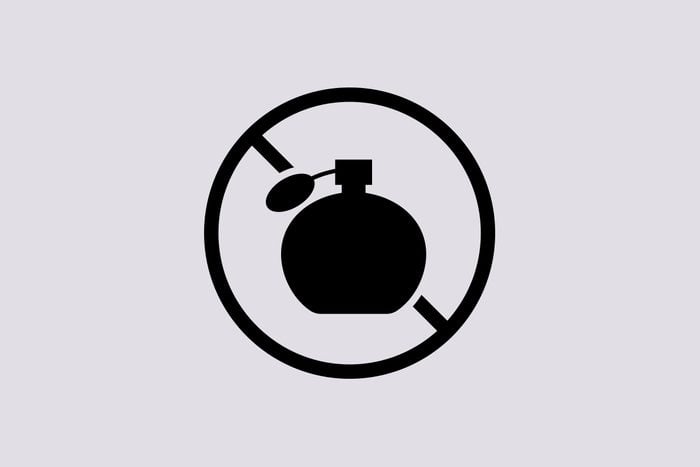
Perfume bottle with a line through it
Seeing a makeup symbol that looks like a perfume bottle with a line through it? Typically, it means that your product doesn’t contain artificial fragrances. If you are sensitive or prone to reactions, look for this symbol. However, you still need to do your due diligence. “Some products that claim to be ‘unscented’ may still contain odor neutralizers or traces of fragrances, so the fragrance-free logo is a clearer indicator for consumers with fragrance sensitivity,” explains Khanna. Products may also just list “fragrance” on their packaging as an ingredient, and that could encompass synthetic and naturally derived fragrances.
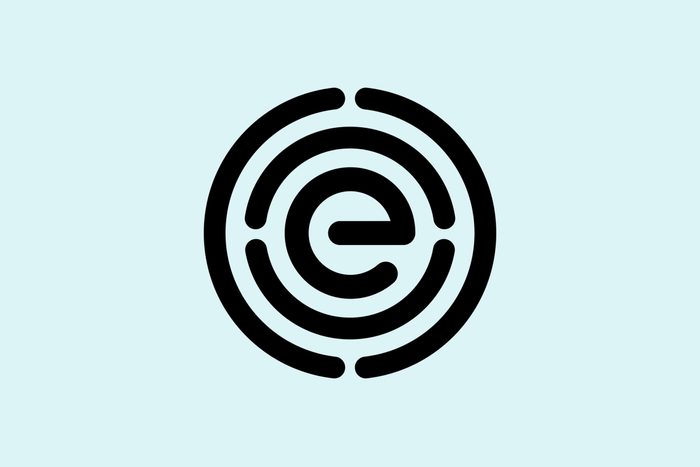
EWG-verified circle
The EWG-certified symbol not only means that the brand is using up-to-par manufacturing processes, based on the standards set forth by the Environmental Working Group, but also that the product doesn’t contain any ingredients on the group’s banned list. That includes anything linked to health, eco-toxicity and/or contamination. “The EWG Verified program is designed to make it easier for consumers to live healthier and more empowered lives,” explains Swei. “With our team of toxicologists, chemists, epidemiologists and formulators, we vet each ingredient to avoid chemicals associated with known or probable health concerns.”
Some of their unacceptable ingredients include ones that have been banned in Europe, such as formaldehyde, a known carcinogen. Other potentially problematic ingredients they look out for: mercury, dibutyl and diethylhexyl phthalates, which have been linked to hormone disruption, as well as isobutyl and isopropyl parabens, which may harm the reproductive system. The best natural sunscreens are those free of these harmful ingredients.
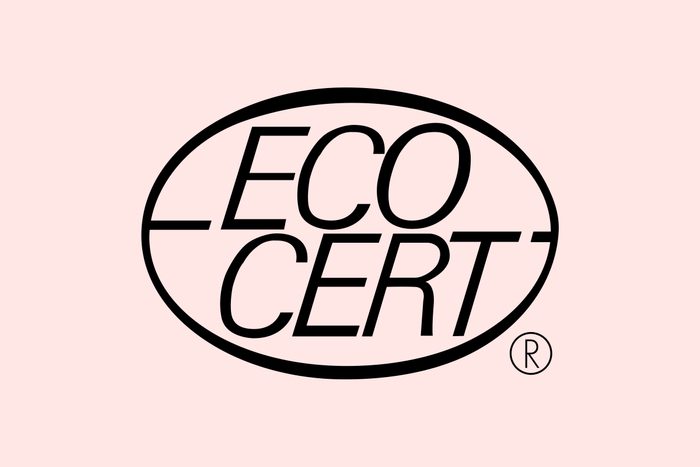
Other makeup symbols
Other symbols—such as refillable, recycled plastic and clean formula—tend to be brand-specific and vary in appearance. They aren’t standard and can mean anything the brand wants them to mean. “Beyond the recycling symbol, the other symbols are primarily a collection of third-party certifications and brand marketing logos,” says Swei. “Brands are increasingly using symbols instead of text, partly [because of] the response to online purchasing.”
Plus, since the space on packaging is limited, especially for small products like eye creams, symbols are becoming more and more popular. One common symbol is the “ECO CERT” symbol, which certifies the product is organic.
Sources:
- Anisha Khanna, co-founder and CEO of Sonäge Skincare
- Homer Swei, PhD, senior vice president of healthy living science at the Environmental Working Group
- EWG: “What Are Parabens, and Why Don’t They Belong in Cosmetics?”
- National Eczema Association: “8 skincare ingredients to avoid if you have eczema, according to dermatologists”
- Harpers Bazaar: “What Is Gluten-Free Makeup and Why Is It a Thing?
- EcoCert: “What is the purpose of COSMOS certification?”
